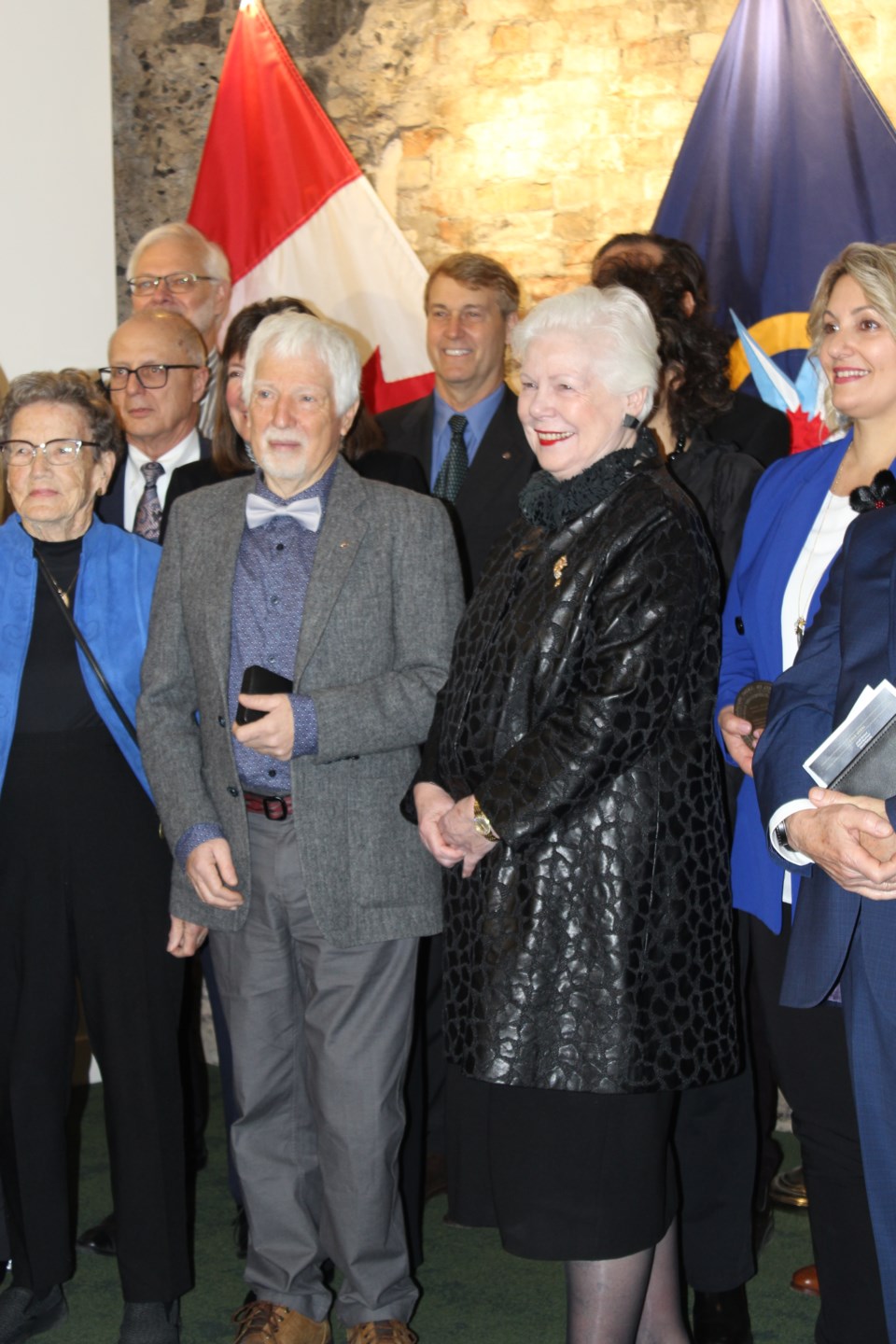CANMORE – Being awarded the Royal Canadian Geographic Society’s (RCGS) 2019 Sir Christopher Ondaatje Medal for Exploration, said Bow Valley geologist and dedicated cave explorer Charles “Chas” Yonge, came as a highly appreciated surprise.
“I suppose it’s a function of having a misspent youth – people with proper jobs don’t get awards like this,” Yonge said jokingly. “But cave exploring has been a lifelong passion, and I certainly appreciate being recognized for it.”
With a PhD in karst paleoclimatology, Yonge has held a “proper job” as adjunct professor with the University of Calgary. For 25 years, he was owner and operator of the popular Canmore Cave Tours business, through which professionally trained guides lead guests on natural history tours deep inside the wild and undeveloped caves of Grotto Mountain.
On the heels of his being named a RCGS Fellow last year, Yonge was presented the medal in Ottawa last month by Honourable Elizabeth Dowdeswell, Lieutenant Governor of Ontario as one of 36 honourees being recognized through various awards for their outstanding contributions to Canada, to the RCGS, or the field of geography.
Yonge was in good company alongside astronaut Harrison Schmitt, the most recent person still living to have walked on the moon, provocative large-scale landscape photographer Edward Burtynsky, and Right Honourable Joe Clark, former Prime Minister of Canada. With 500 people in attendance, the gala event marked the RCGS’s 90th anniversary.
Most of the medals were presented at a special ceremony in the Alex Trebek Theatre at 50 Sussex, headquarters of the RCGS. Well-known as a TV game show host, Trebek was also recognized with an award for his life-long advocacy for geographic literacy for young students.
Remarkably, this marked the third consecutive year the Sir Christopher Ondaatje Medal for Exploration was presented to Rockies’ locals; Chic Scott received it in 2018, and former longtime Canmorites Pat and Baiba Morrow in 2017.
For his part, Yonge was selected from a dozen nominees for his accomplishments as an explorer, academic and entrepreneur. A keen rock climber, he has established numerous new routes and made first ascents in the Rockies and other ranges.
As a researcher, he has contributed much to the field of climate change reconstruction through his pioneering scientific study in karst climatology. He has also, throughout his career, helped countless others gain an understanding and appreciation of natural history.
An enthusiastic and accomplished cave explorer for more than four decades, since his early days in Britain as a “pot-holer,” Yonge’s passion has lured him to investigate many of the planet’s great karst areas, including Cuba, Barbados, Belize, Mexico, Indonesia, Australia, Bhutan and Papua New Guinea – among numerous other locales.
Earlier this year he published his latest book, Understanding the Banff Hot Springs Through Karst Hydrogeology.
“It’s really an exciting time in caving, with new discoveries such as in Greenland where minerals found in caves are giving climactic information north of 80 degrees, and in Wells Gray,” Yonge said.
Caving he pointed out, involves exploring underground passages and tunnels for which no maps, and no knowledge whatsoever exists until cavers explore them.
Located in a remote valley in B.C.’s Wells Gray Provincial Park, the recently discovered – which Yonge played a role un – cave has an entrance that is 100 metres long and 60 metres wide, with a depth equivalent to a soccer field standing on end. Likely the largest known cave in Canada, its entrance became exposed after being buried in glacial ice for thousands of years.
“Its exciting to realize caving is finally being recognized,” Yonge said. “As cavers, we do far more original exploration as we go into spaces were no human has ever trod. We don’t know where the Everest of caves is.”




